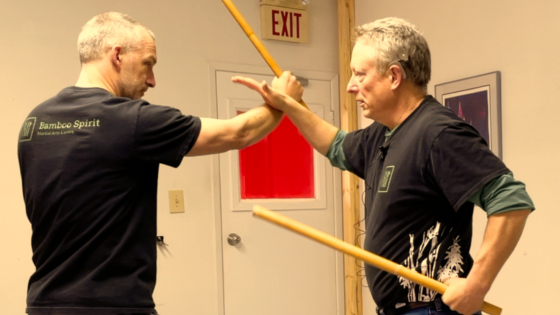Book Review: Sonny Umpad’s Eskrima
Recently, I purchased “Sonny Umpad’s Eskrima: The Life and Teachings of a Filipino Martial Arts Master” by George M. Yore. Blue Snake Books (www.bluesnakebooks.com) published this book.

First, see this video for those who are unaware of who Maestro Sonny Umpad is.
If you are not able to view this video, click here.
I first heard of Maestro Sonny Umpad when I attended one of Datu Kelly Worden’s seminars several years ago. Since then, I have seen his name mentioned on the Internet. Unfortunately, Maestro Sonny passed away in August 2006 at the age of 58.
He was born in Bogo, Cebu, Philippines. Later, he settled in Northern California, where he taught until his untimely death.
Maestro Umpad created the “Visayan Style Corto Kadena/Larga Mano Eskrima.” He was best known for emphasizing the sword in the latter part of his teaching career. His system was influenced by various sources, including Balintawak to Doce Pares, street experiences, and training with Master Raymond Tobosa, Angel Cabales, Leo Giron, Max Pallen, and Gilbert Tenio.
The book also points out that Maestro Umpad drew on his students’ martial arts experiences to find new avenues of research.
The book is divided into three parts. The first part is a biography of Maestro Umpad’s life, beginning in the Philippines and covering his move to California.
It discusses the seeds of his system and how he evolved over the years, particularly his move away from structured drills in favour of “random flow training.”
“Sonny Umpad’s Eskrima” indicates three distinct phases of Maestro Umpad’s system, reflecting his ongoing research and evolution in the art of Eskrima. This should not be surprising as the great martial artists and teachers often evolve over the years as they refine their techniques, concepts, and philosophies.
Two good examples of this are Professor Florendo Visitacion and Professor Remy Presas. One quick look at their careers from beginning to end would reveal considerable evolution in their respective arts.
The second part of this book is a collection of seven well-written essays by various students of Maestro Umpad. The students reflect on their initial encounters with Maestro Sonny and their training under him. Furthermore, they provide observations of his teaching and research methodology and explain his martial philosophy. They give a fascinating window into Maestro Sonny’s deep martial intellect.
The essays show that he had a tremendous intellect and a probing mind, which allowed him to mine the art of Eskrima deeply.
As a result, his “Visayan Style Corto Kadena/Larga Mano Eskrima” is a deep art encompassing different ranges.
According to the writers, it incorporates lots of footwork and a wide range of weapon and empty hand concepts.
The book’s third part attempts to show some pictorial examples of the system, starting with the foundational 17 strikes. Other expressions include solo baston vs. solo baston, solo baston vs. largo mano, largo mano vs. doblecada, and edged tools.
While the authors did their best with their step-by-step pictures, this section is not well done.
It is difficult, at times, to decipher the precise movements from one picture to the next. In this day and age of DVDs and YouTube, photographs of this kind are archaic. As noted in the last book review, Tuttle Publishing has gone to a book/DVD format for some martial arts books. It would have been nice to have a similar format for this book. In any case, I think that this section could use considerable improvement.
If you are into martial philosophy and want insights into Maestro Sonny’s martial philosophy, I highly recommend adding “Sonny Umpad’s Eskrima” to your FMA library.
On the other hand, as noted above, the “how-to” section of the book is poorly done. I look forward to re-reading this book several times for its’ great insights, but I will skip the pictorial section.
Additional Reading
- What Are Filipino Martial Arts?
- Friday Recommendation #20
- “Sinawali Training is Useless”
- FMA Books
- The Downside of “Going With The Flow”
Share this post:
- Click to share on Twitter (Opens in new window)
- Click to share on Facebook (Opens in new window)
- Click to share on LinkedIn (Opens in new window)
- Click to share on WhatsApp (Opens in new window)
- Click to share on Nextdoor (Opens in new window)
- Click to share on Pinterest (Opens in new window)
- Click to email a link to a friend (Opens in new window)
Brian Johns
Related Posts
2 Comments
Leave a Reply Cancel reply
Categories
- Arnis/Kali/Eskrima (113)
- Book Review (8)
- DVD Reviews (3)
- Guest Post (4)
- Inspiration (24)
- Martial Arts (99)
- My story (92)
- Safety (14)
- Tips & tricks (6)
- Uncategorized (3)
- YouTube Videos (8)






[…] (20) Sonny Umpad’s Eskrima. […]
[…] Book Review: Sonny Umpad’s Eskrima […]